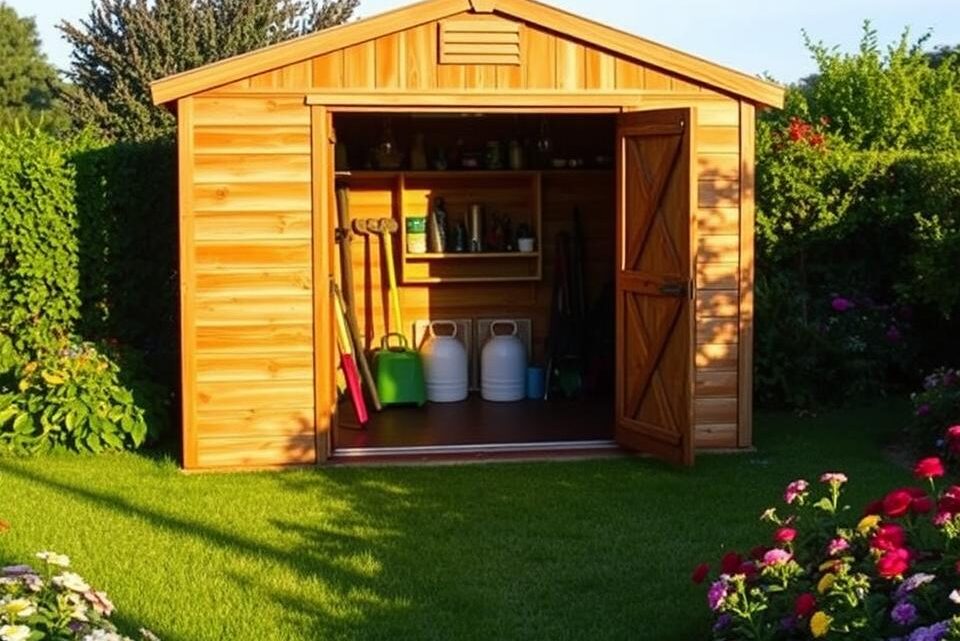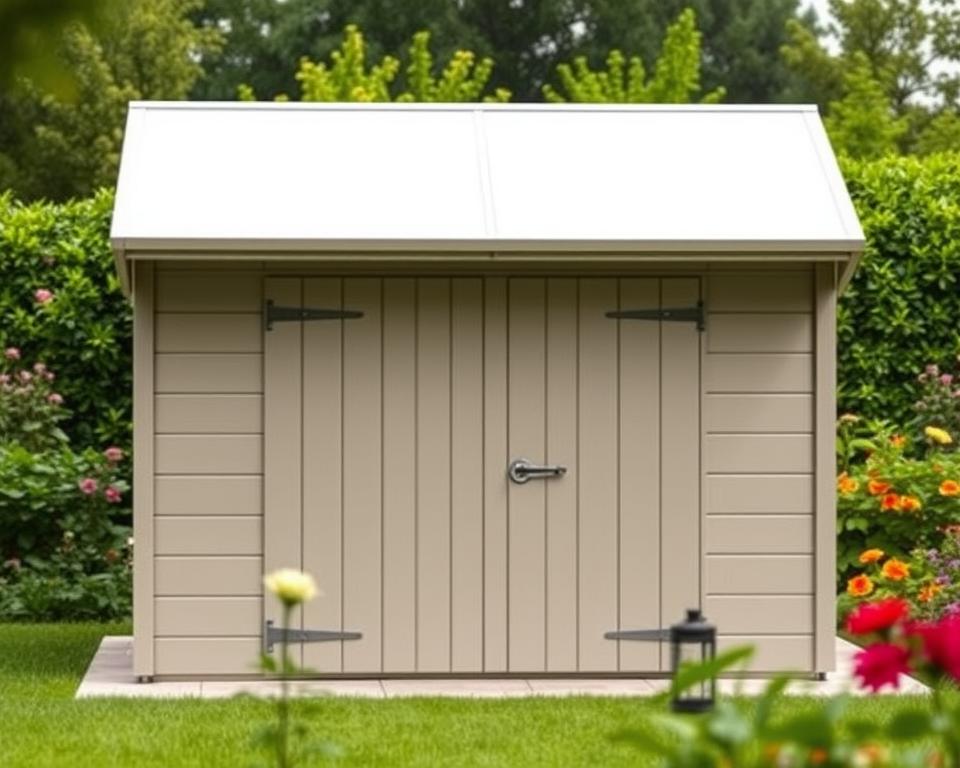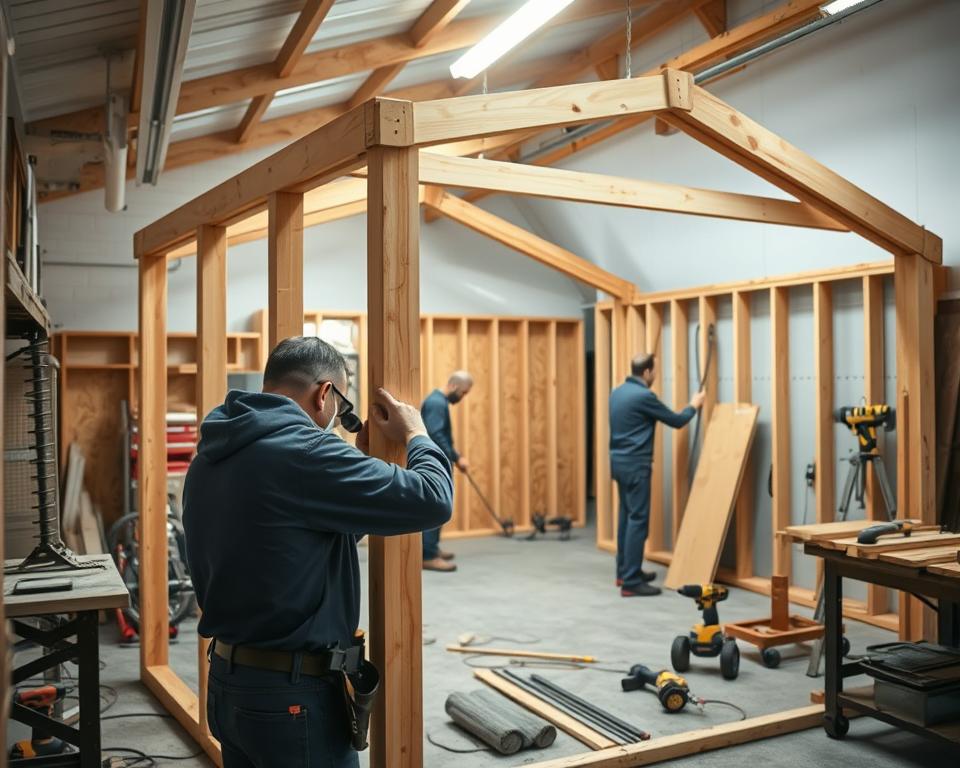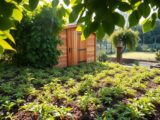What Type of Shed Lasts the Longest?

When selecting garden storage solutions, homeowners seek durable garden sheds that withstand years of environmental challenges. The right shed not only protects your valuable equipment but also enhances your outdoor space’s functionality and aesthetic appeal.
Long-lasting storage solutions require careful consideration of materials, construction quality, and maintenance strategies. Each shed type offers unique benefits and potential drawbacks that impact its overall longevity and performance in different climate conditions.
Understanding the critical factors that contribute to a shed’s durability can help you make an informed investment that meets your specific storage needs while providing excellent value for your money.
Inhaltsverzeichnis
Key Takeaways
- Material selection significantly impacts shed longevity
- Professional installation enhances structural integrity
- Regular maintenance extends shed lifespan
- Climate and environment play crucial roles in durability
- Different materials offer unique preservation advantages
Understanding Different Shed Materials and Their Durability
Selecting the right shed building materials is crucial for creating a long-lasting outdoor storage solution. Each material brings unique characteristics that significantly impact durability, maintenance, and overall performance.
Garden sheds represent a substantial investment, so understanding the nuanced differences between materials becomes essential for homeowners seeking cost-effective sheds.
Common Building Materials for Garden Sheds
Shed construction typically involves three primary materials:
- Wood: Traditional and versatile
- Metal: Robust and low-maintenance
- Vinyl: Modern and weather-resistant
Impact of Material Choice on Longevity
The durability comparison between these materials reveals distinct advantages and limitations. Material selection directly influences a shed’s lifespan, structural integrity, and resistance to environmental challenges.
| Material | Average Lifespan | Maintenance Level |
|---|---|---|
| Wooden Sheds | 10-15 years | High |
| Metal Sheds | 15-20 years | Low |
| Vinyl Sheds | 15-25 years | Very Low |
Cost vs Durability Analysis
Evaluating shed building materials requires balancing initial investment with long-term performance. While wooden sheds might seem economical, metal and vinyl options often provide superior durability with minimal maintenance requirements.
Smart homeowners understand that choosing the right material isn’t just about upfront costs but about creating a lasting, reliable outdoor storage solution.
Metal Sheds: The Ultimate in Longevity
Metal garden sheds represent the pinnacle of outdoor storage solutions for homeowners seeking durability and long-lasting performance. These robust structures offer exceptional protection against environmental challenges, making them an ideal choice for rust-resistant storage needs.
When considering metal garden sheds, understanding their key advantages becomes crucial. The materials used, typically galvanised steel or aluminium, provide significant benefits:
- Exceptional weather resistance
- Minimal maintenance requirements
- Superior pest protection
- Extended lifespan compared to traditional materials
Modern metal shed designs have revolutionised outdoor storage solutions. Manufacturers now create sleek, corrosion-resistant structures that blend functionality with aesthetic appeal. Galvanised steel remains the most popular material, offering unparalleled protection against rust and degradation.
“Metal sheds provide a practical, long-lasting storage solution for discerning homeowners,” says industry expert Sarah Thompson.
Potential drawbacks include initial cost and potential heat retention. Nevertheless, the long-term benefits of metal garden sheds far outweigh these minor considerations.
| Material Type | Average Lifespan | Maintenance Level |
|---|---|---|
| Galvanised Steel | 20-30 years | Low |
| Aluminium | 15-25 years | Very Low |
For homeowners seeking reliable, rust-resistant storage, metal garden sheds offer an unmatched combination of durability, protection, and aesthetic versatility.
Vinyl Sheds: Modern and Maintenance-Free Options
PVC garden sheds have revolutionised outdoor storage solutions for homeowners seeking durable and low-maintenance options. These innovative structures offer an exceptional alternative to traditional shed materials, providing a perfect blend of practicality and modern design.

Modern gardeners and homeowners are increasingly turning to vinyl sheds as their preferred storage solution. These remarkable structures combine cutting-edge technology with practical design, ensuring long-lasting protection for your garden equipment and tools.
Benefits of PVC Construction
Vinyl sheds present numerous advantages that make them stand out in the world of low-maintenance storage solutions:
- Exceptional resistance to rot and decay
- Impervious to insect infestations
- No requirement for regular painting or staining
- Lightweight yet robust construction
Weather Resistance Features
The remarkable engineering behind PVC garden sheds ensures superior protection against various environmental challenges. These structures can withstand:
- Intense UV radiation
- Heavy rainfall
- Extreme temperature fluctuations
- Potential wind damage
Structural Integrity Over Time
Investing in a vinyl shed means choosing a storage solution that maintains its quality and appearance for years. The material’s inherent strength prevents warping, cracking, and degradation, ensuring your shed remains functional and attractive throughout its lifetime.
“Vinyl sheds represent the pinnacle of modern outdoor storage technology, offering unmatched durability and minimal maintenance requirements.” – Garden Design Experts
What Type of Shed Lasts the Longest?

When searching for the most durable shed types, homeowners need a comprehensive understanding of material longevity. Different shed materials offer unique advantages in creating the longest-lasting garden storage solution.
Metal and vinyl sheds typically outperform wooden structures in durability. These modern materials resist environmental challenges more effectively:
- Metal sheds: 20-30 years lifespan
- Vinyl sheds: 15-25 years lifespan
- Wooden sheds: 10-15 years with regular maintenance
Durability depends on several critical factors:
- Quality of initial construction
- Regular maintenance
- Local climate conditions
- Protection from direct sunlight and moisture
“Invest in quality, and your garden storage will reward you with decades of reliable service.”
Metal sheds emerge as the champions of longevity. Galvanised steel structures provide exceptional resistance against rust, corrosion, and structural degradation. Vinyl sheds offer a close second, with their weather-resistant properties and minimal maintenance requirements.
Selecting the right shed involves balancing initial investment with long-term performance. Prioritise quality materials and professional installation to maximise your garden storage’s lifespan.
Wooden Sheds: Traditional Choice with Proper Care
Wooden garden sheds remain a beloved option for homeowners seeking a classic and versatile storage solution. These timeless structures blend beautifully with natural landscapes while offering practical functionality for gardening enthusiasts and DIY lovers.

Selecting the right timber is crucial for creating durable wooden garden sheds that can withstand the unpredictable British weather. Different wood types offer unique characteristics that impact long-term performance and resilience.
Timber Selection for Maximum Durability
- Cedar: Naturally resistant to rot and insect damage
- Pressure-treated pine: Enhanced protection against moisture
- Redwood: Exceptional weather resistance
- Douglas fir: Strong and relatively affordable option
Timber Shed Maintenance Strategies
Proper timber shed maintenance involves several critical steps to extend the structure’s lifespan. Regular inspections, protective treatments, and proactive care can significantly enhance durability.
- Apply water-resistant wood sealant annually
- Check for signs of moisture damage
- Repair minor cracks and splits immediately
- Repaint or restain every 2-3 years
Preservation Techniques
Protecting wooden garden sheds from environmental challenges requires strategic preservation methods. Moisture control and regular maintenance are key to preventing structural deterioration.
Professional timber experts recommend creating adequate ventilation and maintaining a dry internal environment to prevent wood decay.
By investing time in proper timber shed maintenance, homeowners can enjoy a beautiful, functional outdoor storage solution that lasts for many years.
Essential Factors Affecting Shed Lifespan

Understanding shed longevity factors is crucial for homeowners looking to maximise their outdoor storage investment. The lifespan of a shed depends on multiple critical elements that go beyond material selection.
Site preparation stands as a fundamental aspect of extending shed life. Proper ground preparation prevents moisture accumulation and structural instability. Gardeners must consider several key considerations:
- Level ground with excellent drainage
- Elevated foundation to prevent water damage
- Protection from direct soil contact
- Adequate ground compaction
Ventilation plays a pivotal role in shed longevity. Adequate air circulation prevents moisture buildup, reducing risks of mould, rot, and structural deterioration.
| Longevity Factor | Impact on Shed Life | Recommended Action |
|---|---|---|
| Foundation Quality | High | Use concrete base or robust gravel platform |
| Ventilation | Medium-High | Install vents or louvres |
| Weather Protection | Critical | Apply weatherproof sealants |
Weather protection represents another critical shed longevity factor. Regular maintenance, including painting, sealing, and addressing minor damages promptly, significantly contributes to extending shed life.
Investing time in proper preparation and maintenance can double your shed’s operational lifespan.
Strategic placement also matters. Positioning your shed away from direct sunlight, harsh winds, and potential water accumulation zones minimises structural stress and potential damage.
Professional Installation vs DIY: Impact on Durability
Choosing between professional shed installation methods and do-it-yourself approaches can significantly influence your shed’s long-term performance and durability. The installation process plays a crucial role in determining how well your garden structure will withstand environmental challenges.

When considering professional shed assembly, homeowners gain access to expert skills that ensure structural integrity. Trained professionals understand the nuanced requirements of different shed materials and terrain conditions.
Common Installation Mistakes
DIY installations often result in critical errors that compromise shed longevity:
- Improper foundation preparation
- Incorrect levelling of base
- Inadequate weatherproofing
- Insufficient anchoring techniques
Professional Installation Benefits
Professional shed installation offers numerous advantages that protect your investment:
| Benefit | Impact |
|---|---|
| Precise Foundation | Ensures structural stability |
| Expert Weatherproofing | Prevents moisture damage |
| Proper Alignment | Reduces future structural stress |
| Warranty Protection | Maintains manufacturer guarantees |
Professional shed assembly transforms a simple construction project into a robust, long-lasting outdoor structure that withstands British weather conditions.
Maintenance Tips for Maximum Shed Longevity
Preserving garden storage requires a strategic approach to shed maintenance. Regular care can significantly extend the lifespan of your garden shed, protecting your investment and keeping it in top condition.
A comprehensive shed maintenance guide involves several key practices:
- Conduct quarterly inspections to identify potential issues early
- Clean the shed’s exterior and interior twice annually
- Check for signs of moisture, rust, or wood decay
- Repair minor damages promptly before they escalate
Different shed materials demand specific maintenance strategies. Wooden sheds need annual wood treatment and sealant application. Metal sheds require rust prevention and occasional repainting. Vinyl sheds benefit from gentle cleaning with mild detergents.
Proactive maintenance is the key to a long-lasting garden storage solution.
Essential maintenance tasks include:
- Clearing gutters and drainage systems
- Checking roof integrity
- Lubricating door hinges
- Ensuring proper ventilation
By implementing these maintenance practices, you’ll protect your shed from environmental damage and ensure it remains a reliable storage space for years to come.
Conclusion
Choosing durable sheds requires careful consideration of multiple factors. Each shed material offers unique advantages for long-lasting garden storage solutions. Metal, vinyl, and treated wooden sheds present distinct options for homeowners seeking reliable outdoor storage spaces.
Your ultimate selection depends on local weather conditions, budget, and maintenance commitment. Proper installation plays a crucial role in extending shed longevity. Regular upkeep prevents structural deterioration and ensures your garden storage solution remains functional for years.
Durability isn’t just about material selection; it’s about understanding your specific requirements. Factors like climate exposure, intended usage, and available maintenance time will significantly influence your shed’s performance. Professional guidance can help you navigate these decisions effectively.
Invest time in researching and understanding each shed type’s characteristics. By prioritising quality construction, appropriate material, and consistent maintenance, you’ll create a robust garden storage solution that serves your needs for decades. The right shed is an investment in both functionality and aesthetic appeal for your outdoor space.
FAQ
What material makes the most durable shed?
Metal sheds, particularly those made from galvanised steel, typically offer the longest lifespan. They’re resistant to rot, pest damage, and weather extremes, often lasting 20-30 years with minimal maintenance compared to wooden or vinyl alternatives.
How often should I maintain my garden shed?
Regular maintenance depends on the material. Wooden sheds require annual treatment and inspection, metal sheds need periodic rust-checking and cleaning, and vinyl sheds need occasional washing and seal checks. Aim to inspect your shed at least twice a year, preferably in spring and autumn.
Can I extend my shed’s lifespan through specific treatments?
Absolutely! For wooden sheds, use high-quality preservative treatments annually. Metal sheds benefit from rust-resistant paint and protective coatings. Vinyl sheds can be maintained by keeping them clean and checking seals. Proper foundation and positioning also significantly impact durability.
What foundation works best for maximising shed longevity?
A level, well-drained concrete base is ideal for most shed types. Ensure proper drainage around the foundation, use a moisture barrier, and consider slightly raising the shed to prevent direct ground contact, which can reduce rot and corrosion risks.
Are more expensive sheds always more durable?
Not necessarily. Durability depends on material quality, construction techniques, and maintenance, not just price. A well-maintained mid-range shed can outlast a more expensive model that’s neglected. Always consider long-term care and material characteristics over initial cost.
How do different climates affect shed longevity?
Climate significantly impacts shed durability. Metal sheds perform well in harsh conditions, vinyl sheds resist UV damage, and wooden sheds require more protection in humid or extremely wet environments. Consider your local weather patterns when selecting shed materials.
What are the most common mistakes that reduce shed lifespan?
Common mistakes include poor foundation preparation, inadequate ventilation, neglecting regular maintenance, improper installation, and positioning the shed in areas with poor drainage or excessive moisture. Always follow manufacturer guidelines and invest time in proper setup and care.
Can I repair a damaged shed instead of replacing it?
Many shed damages can be repaired, depending on the extent and type of damage. Wooden sheds are often easiest to repair, metal sheds can be patched with specialist treatments, and vinyl sheds might require panel replacements. Professional assessment can help determine repairability.
What additional features can improve shed durability?
Consider reinforced roofing, high-quality hinges and locks, additional weatherproofing seals, ventilation systems, and elevated foundations. These features can significantly enhance structural integrity and protect against environmental damage.
How do I choose the right shed for long-term use?
Assess your specific needs, local climate, budget, and maintenance capabilities. Metal sheds offer durability, wooden sheds provide aesthetic appeal, and vinyl sheds require minimal maintenance. Consider factors like storage requirements, aesthetic preferences, and long-term investment potential.

